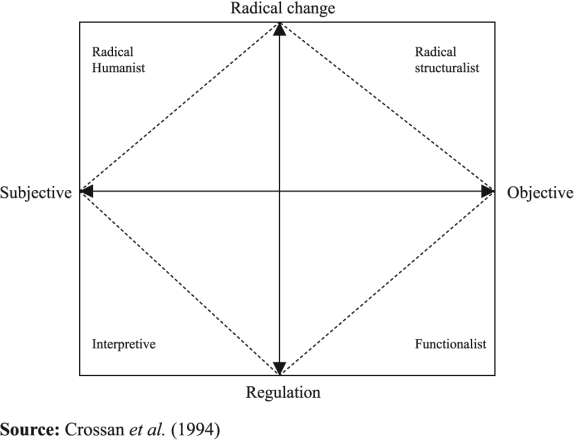How do we, as instructors, know how successful our teaching is? How can we determine the efficacy of technology use in the classroom? How do we measure student learning outcomes?
The majority of our last in-class discussion on Making the case I evolved around these very important questions… While some colleagues expressed the need for more qualitative, constructivist approaches (e.g., learning is subjective), others emphasized the importance of quantitative positivist approaches (e.g., focus on generalizability of results) to capture the status quo of student learning. Burrell & Morgan’s four paradigms of social theory immediately came to mind (see figure below).
Research in the functionalist and interpretive paradigm tend to explain, understand, and observe the status quo of phenomena (e.g., student learning), while research in the radical humanist and radical structuralist emphasize action, change, and societal conflict. I believe that the class discussion was in part about whether the status quo of student learning can be explained with subjectivist or objectivist approaches. From an epistemological point of view, objectivist view the world as a concrete, external structure, which can be identified and measured, whereas subjectivists aim to understand the world from a subjective point of view. I don’t know which paradigm is most appropriate to study student learning… But in the end, it comes down to what the research goal is. What do we want to accomplish? If we seek to develop testable hypotheses and aim toward generalizable results, a positivist approach may be more appropriate… Just some things to consider.

I really like how this post put the class discussion in perspective…it helped me wrap my mind around the discussion more. Certainly the fact that we are even thinking about these topics is a good start.